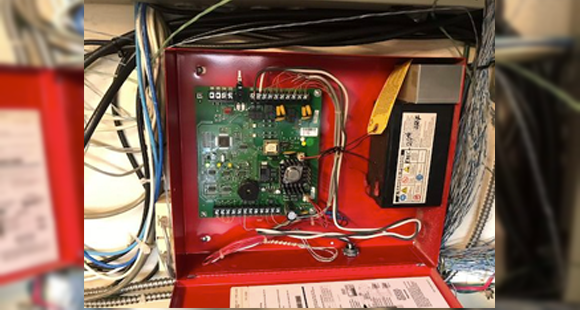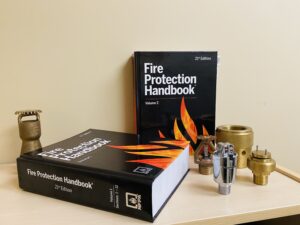System integrations refer to when two or more fire suppression, life safety, or fire detection systems are designed to function in a collaborative manner allowing for more comprehensive protection of people, buildings, and assets from fires. These systems are installed so that they can send and receive signals to each other based on their current status or any individual inputs they receive. A few examples of such systems include a smoke detector activating a sprinkler system, a fire alarm activating door hold open devices to assist with evacuation, or even a fire alarm activating a mass notification system to notify building residents that they need to evacuate. These systems are highly customizable since they can include a wide range of individual systems in almost any combination, not to mention the fact that the inputs and outputs that they will send between each other will be specifically chosen to achieve different goals depending on the building and what is needed out of their systems. Just like any standard system acting alone, integrated systems must be regularly tested to ensure they are functioning as intended. Due to the variability of these systems, the testing protocols for them are quite different from their individual counterparts.
So how do we test to ensure system integrations are working effectively?
The testing of integrated systems is controlled by a book of standards from the Standards Council of Canada known as CAN/ULC-S1001, which is enforced in the province of Alberta by both building and fire code. Integration testing follows a more general approach than most individual system tests since there are so many combinations and desired outcomes that could be tested for. The first step is to create a customized Integrated Testing Plan. This plan is created by gathering all the information about each system involved in the integration, the facility, and the desired goals of the integration. Once this is done, a plan detailing the testing procedure, desired objectives of the integration, and the required sequence of operations can be made. This plan can then be followed during each integration test to ensure all requirements of the systems are being met.
The main focus of system integration testing is not whether each individual system is functioning as intended, but if the combined systems are interacting as intended to achieve the desired goal. For example, it does not matter if a fire suppression system works as intended if it never receives the required signal to turn on. Integration tests focus on the inputs and outputs sent and received to ensure the correct sequence of operations is being achieved between the systems to meet the desired intent of the integration. However, sometimes regular tests of individual systems that happen to be integrated end up demonstrating that the integration is working as intended. In these cases, CAN/ULC-S1001 allows for the documentation of a systems test proving a working integration to take the place of a dedicated integration test. Individual system tests still need to be done regardless of the outcome of integration tests however, because integration tests only prove the connection between systems is functional and not the functionality of the entirety of the individual systems.
The last step in inspecting system integrations is to maintain an Integrated Testing Report. This report is not just the records of the integration tests, but a compilation of test reports, your Integrated Testing Plan, and any system documents from the parties involved in the design and installation of the system. The Integrated Testing Report is required to be a living document, meaning it must constantly be kept up to date for the entire lifespan of the building. This means that a constant record of the system integrations is available as a resource when needed.
The frequency of integration tests depends on when the system was installed, if it has been tested before, and the condition of the building that the systems are installed in. For example, a new system must be tested one year after its initial test to ensure that it still functions properly after a year of seasonal change. This also applies to systems retrofitted into existing buildings as well as systems that are affected by building modifications. In these cases, once the one-year inspection has been completed, the inspections must then be completed on a 5 year frequency. This frequency is the standard testing frequency for integrated systems.
Integration testing is a highly customized process when compared to stand alone systems tests. From preparation of your Integrated Testing Plan to the constant updates to your Integrated Testing Report, integration testing needs to be specialized for your specific system. Here at Rotaflow we are prepared to assist with all your integration testing needs from start to finish.
Please contact Rotaflow if your system integrations are due for an inspection.



